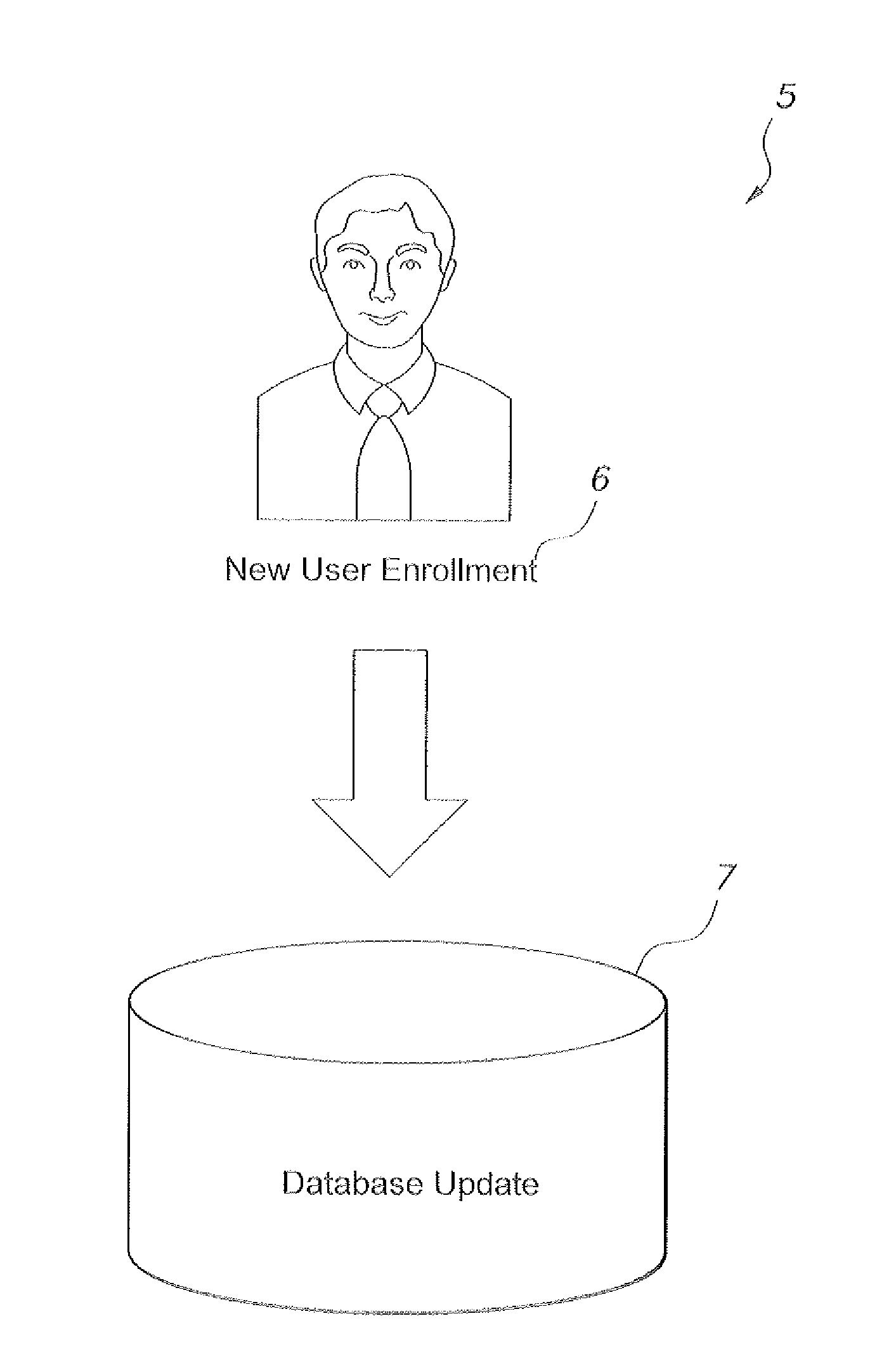Passive continuous authentication method
a continuous authentication and pass-through technology, applied in the field of computer security, can solve problems such as security leaks right away, no one can know who used the computer, and the machine lacks the information to know who is using
- Summary
- Abstract
- Description
- Claims
- Application Information
AI Technical Summary
Benefits of technology
Problems solved by technology
Method used
Image
Examples
Embodiment Construction
[0020]A system for implementing the passive continuous authentication method, as shown in FIG. 7, is able to authenticate and memorize a user's hard and soft biometric information, e.g., facial details and clothes' color, and to continuously authenticate whether the person using the terminal is the valid, authenticated user. An exemplary system 700 includes a webcam 702 connected to a video frame buffer 704, which is connected to a GUI output 726 and a skin color detector 706. The skin color detector 706 is connected to the GUI output and a face detection module 708. The face detection module 708 has an output connected via a switch 716 (S1) to either the eye detection module 710 or to a soft biometric matching module 722. The eye detection module 710 is connected to a rotation and normalization module 712. A face database 718 and the rotation and normalization module 712 are connected to face-matching module 720. The face-matching module 720 is connected either to a system access c...
PUM
 Login to View More
Login to View More Abstract
Description
Claims
Application Information
 Login to View More
Login to View More - R&D
- Intellectual Property
- Life Sciences
- Materials
- Tech Scout
- Unparalleled Data Quality
- Higher Quality Content
- 60% Fewer Hallucinations
Browse by: Latest US Patents, China's latest patents, Technical Efficacy Thesaurus, Application Domain, Technology Topic, Popular Technical Reports.
© 2025 PatSnap. All rights reserved.Legal|Privacy policy|Modern Slavery Act Transparency Statement|Sitemap|About US| Contact US: help@patsnap.com



